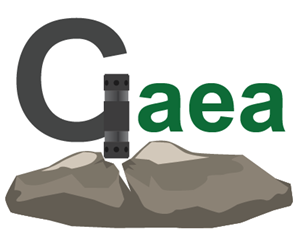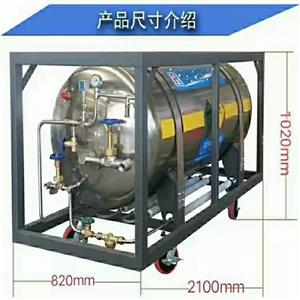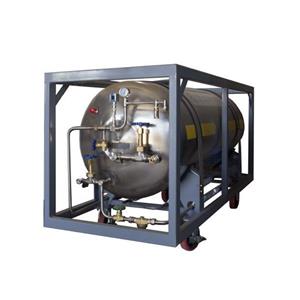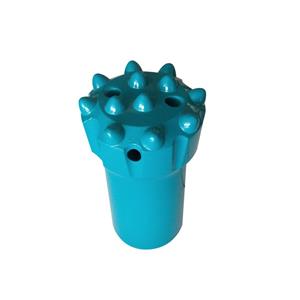Exploration and analysis of construction technology of carbon dioxide rock demolition system
Related products Link:
Abstract: Chinese subway construction is currently in a stage of rapid development, and most of them are built in the prosperous areas of the city. The pollution control caused by the excavation and construction of subway stations is relatively strict. If the terrain is thicker, harder, and more complex rock formations, the rock excavation and construction is difficult. How to speed up the hard rock excavation and construction progress under the premise of ensuring the safety of the foundation pit, surrounding buildings, pedestrians, and vehicles? The construction period requirement is a major problem faced by subway foundation pit excavation. The CO2 cracking rock excavation technology(CO2 rock demolition system) is adopted to drill and expand the rock mass with the open face to make the rock mass rupture and slide to form the boundary surface of the free space, and then continue along the open face after the cracking rock. Large-area drilling in the direction for CO2 gas cracking construction can efficiently and quickly complete the excavation of the deep foundation pit of the station.
1 Project overview
A subway station in Guangzhou is a four-story underground station with a total length of 445.21m, a standard section width of 23.8m, and a foundation pit depth of about 30m. The rock surface where the station is located is shallowly buried, mainly composed of quaternary rocks such as slightly weathered conglomerate, slightly weathered argillaceous siltstone, slightly weathered sandy mudstone, slightly weathered mudstone, and slightly weathered mixed pebble conglomerate, with high rock strength and slightly weathered The excavation depth of the rock is 6-20m, and the slightly weathered rock face becomes thicker toward the north. According to the actual situation, the remaining stonework at the north end of the station is about 80,000 m3, with a length of about 240m.
2 Principle of CO2 gas cracking rock(rock demolition system)
The principle of CO2 gas rock cracking(rock demolition system) is to use liquid carbon dioxide to rapidly and rapidly gasify and expand under the condition of sudden heating to produce a strong impact force. Through appropriate control, the effect of rock cracking is created.
First, use the filling machine to fill the liquid carbon dioxide into the cracker (and also install the heating device, the bottom iron sheet, etc.), and install the cracker into the hole to tightly seal the hole; then use the exciter to activate The heating device in the cracker makes the liquid carbon dioxide rapidly expand more than 1,000 to 2,000 times under the condition of rapid heating, which instantly generates a strong impact pressure (300 to 400 MPa). Break through the iron sheet at the bottom of the seal, and then quickly rush out along the set vent hole. Due to the closed hole, the gas cannot leak freely, which will impact the surrounding rocks and produce destructive effects, resulting in a rock cracking(rock demolition) effect.
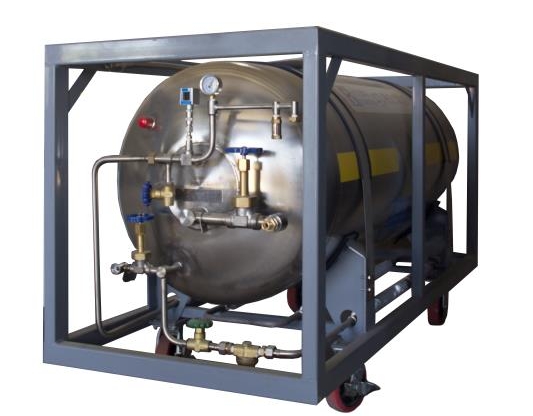
3 Advantages of carbon dioxide gas cracking rock(rock demolition system)
Main advantages:
①It has essential safety features. It is very safe in terms of storage, transportation, carrying, use, and recycling. The main engine is separated from the cracker equipment, and the time from gas filling to the end of rock cracking is relatively short. The liquid carbon dioxide perfusion only takes 1 to 3 minutes, and the excitation to the end takes only 4 ms. There is no dumb gun during the implementation process, and no gun inspection is required. The safety warning distance is short, and there is no hidden safety hazard;
②It can be directional cracking and can be controlled with delay, especially in special environments, such as residential areas, tunnels, subways, underground, etc., during the implementation process, there is no destructive vibration and short wave, and it can affect the surrounding area. No destructive impact on the environment;
③No need for fireworks, simple management, easy to learn, fewer operators, no need for professional staff; ④The materials are rich in sources, available on-site, chemical plants, gas filling stations have liquid carbon dioxide;
⑤Improve efficiency ,lower the cost. Reduce complicated approval procedures and management restrictions. Before injecting carbon dioxide, they are non-explosive products;
⑥Environmental protection: Directional venting does not cause damage to the surrounding environment, and does not produce harmful gases such as carbon monoxide and nitrogen oxides;
⑦Convenience: Replacement of different types of constant energy releases through different filling quantities The sheet and the heating activator can control the working pressure of the expansion system, so as to adapt to different working environments;
⑧Economy: the whole system can be used repeatedly, and the use cost is low;
⑨Safety: The process of assembly, filling and transportation is safe and reliable, compared with explosive blasting Can eliminate the accident of dumb gun collapse;
⑩Fast: assembly and filling operations are simple, and the excitation preparation time is short, which can greatly improve work efficiency and mass production.
4 Carbon dioxide gas cracking test situation
4.1 Test purpose
Due to the dense buildings surrounding the foundation pit, the surrounding petitioning pressure is high, and construction techniques with large vibrations such as blasting cannot be used. It is hoped that the test results of the carbon dioxide gas cracking method can be used to analyze whether the hard rock excavation problem can be solved. Through experiments, the relevant parameters such as the face surface, drilling hole distance, hole depth, and inclination angle are determined, which provides data support for analyzing and improving the efficiency of carbon dioxide gas cracking. The impact of the rock cracking method on surrounding vibration, noise, flying rocks, etc., is tested through experiments.
4.2 Test location and geological conditions
In this test, the rock formation on the west side of the 43rd axis, which has an open surface and a representative rock formation, is selected about 13m below the plane of the foundation pit, and the test range is 1.5m×4m. The rock type of the test site is slightly weathered conglomerate <9-1>, the gravel content is about 75%-85%, and it is sub-round to sub-prismatic. The size is mainly from 1.50 to 7.50 cm in the vertical direction, and the maximum particle size is greater than 10.0 cm. , The pebbles are unevenly distributed.
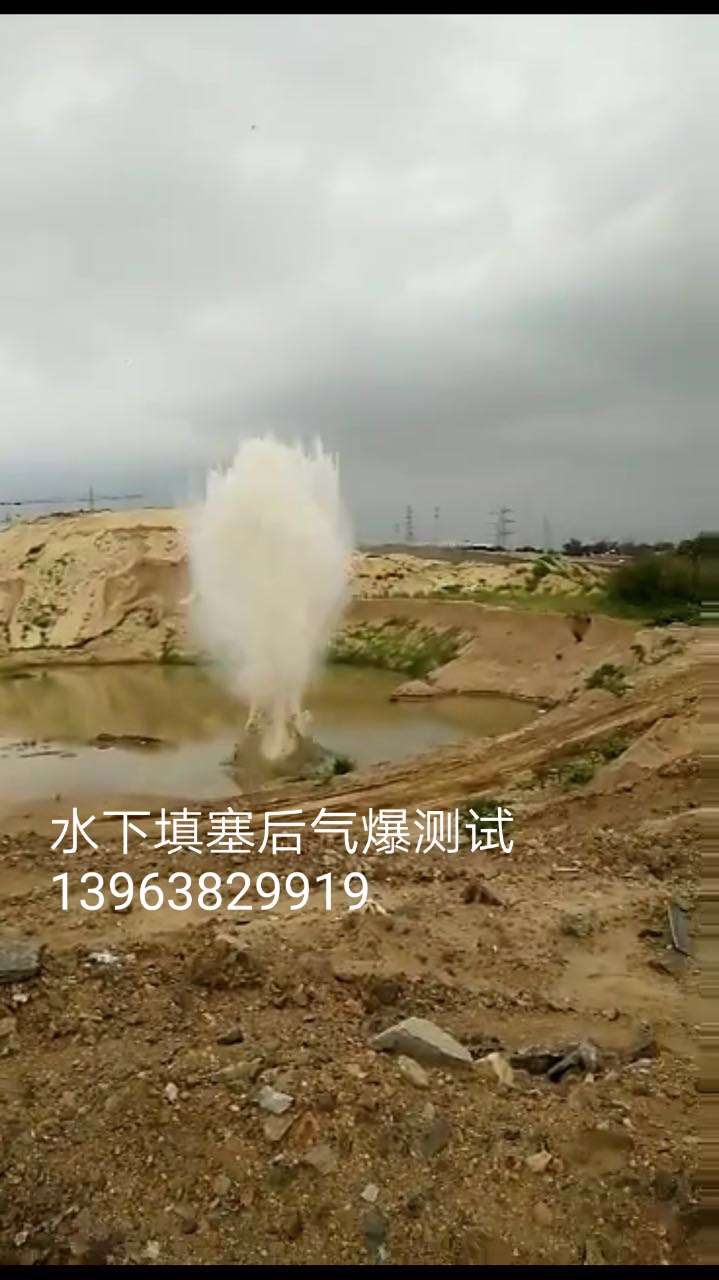
4.4 Test summary
(1) The test results show that the rock cracking ability basically meets the construction requirements of the slightly weathered rock formation, the process is simple, and the operability is strong. This test found that the hole spacing is 0.8×0.8m and the hole depth is 3.0m. The rock cracking effect is ideal, and it can be used as a carbon dioxide gas cracking rock construction parameter for stone excavation construction. The 18m3 hole drilled this time can reach 40m3 of cracked rock. After the rock is cracked, the blasting of large rocks can be quickly broken.
(2) Through experiments, it is found that the rock cracking method has less impact on vibration, noise and flying rocks around the foundation pit, and the overall safety of carbon dioxide cracking is better than ordinary blasting.
(3) To sum up, the use of carbon dioxide gas cracking construction technology, the process is simple, the effect of breaking the slightly weathered rock formation is ideal, and the impact on the surrounding environment is small. It can not only meet the construction period and safety requirements of the stone excavation of this project, but also play a positive role in promoting the scope of urban land protection and the excavation of stone that is strictly prohibited from blasting construction.
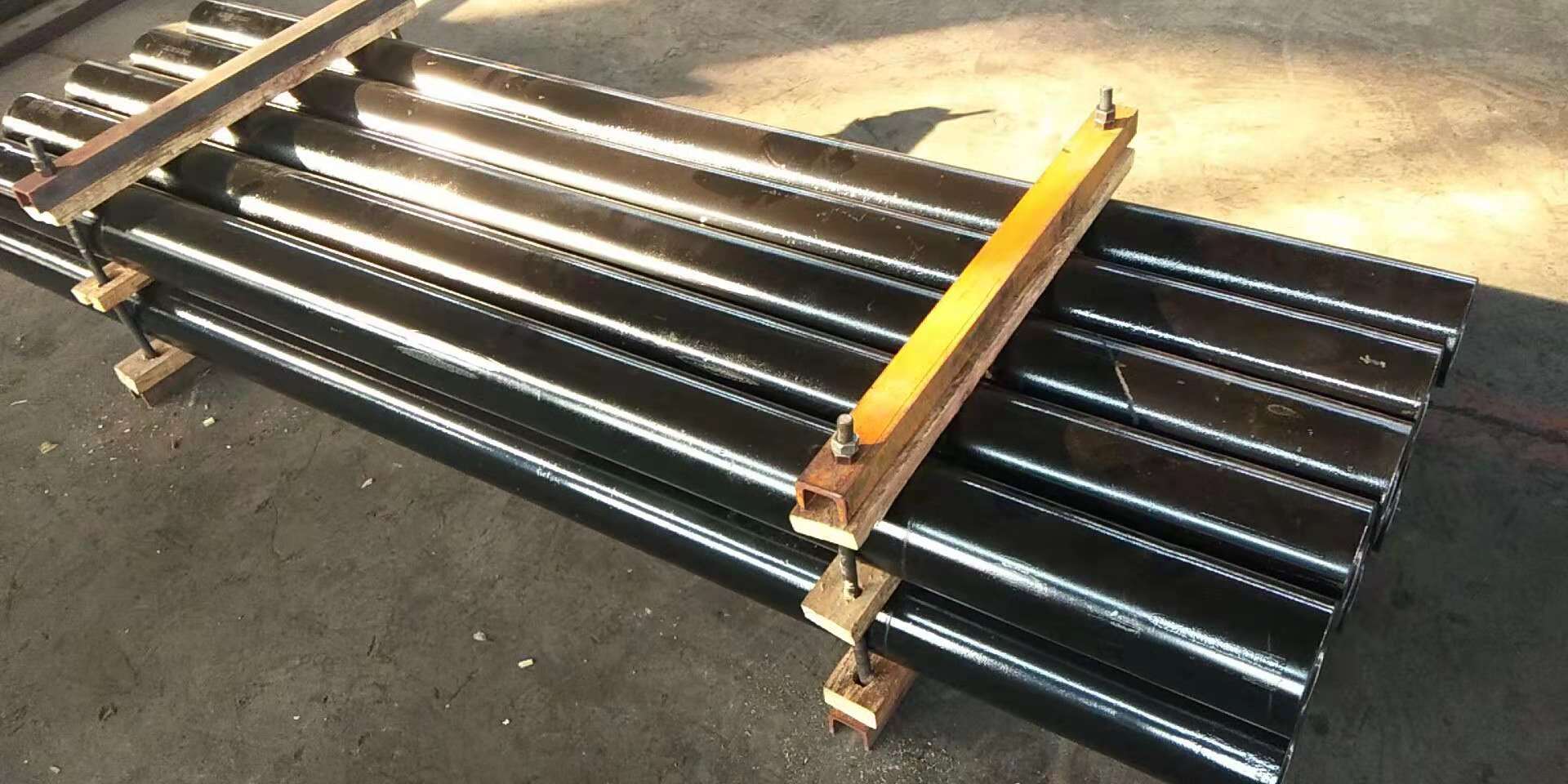
5 Implementation method of carbon dioxide gas cracking
5.1 Construction method of ground operation room
(1) Preparation before filling the carbon dioxide cracker.
(2) Assembly:
① Put the liquid storage tube of the fracturing device on the display rack, insert the iron wire into the main pipe, and make the end with the hook protrude from the end of the main pipe with lettering. Then hook the wire of the heating device with the iron wire and pull the wire to make the wire protrude from the other end of the liquid storage tube;
②The constant pressure shearing is installed on the gasket and connected with the wire of the heating device. Then pull out the heating device to make the constant pressure reducing slices completely enter the liquid storage tube;
③Tighten the release tube first, and then tighten the filling valve, all screwed until the hand can not be screwed;
④Place the screwed rupture device in the disassembly machine On the jaws, insert one end of the filling valve into the disassembly and assembly head. Then turn the emergency stop button clockwise and press the start button to start the disassembly machine;
⑤Press and hold the clamping button and release it after the pressure rises to more than 10MPa. Then press and hold the tightening button when the pressure rises to 10MPa, release the tightening button;
⑥Press and hold the release button, and then turn the cracker around;
⑦Repeat step
⑧Measure the resistance, the normal resistance is generally 2Ω.
(3) Inflation:
①Place the rupture device on the filling table to align the filling holes, tighten the clamping rod and use an Allen key to open the filling valve;
②Press the reset button on the filling machine to turn the weighing indicator Clearing;
③Degassing: Before working for the first time every day, it is necessary to deflate to empty the entire pipeline. First open the inlet ball valve and outlet ball valve on the filling station. Then press the deflation button until the outlet ball valve emits continuous white gas, then close the outlet ball valve;
④Wash the pipe: After pressing the deflation button, close the inlet ball valve and then open the outlet ball valve to release the carbon dioxide in the cracker. Close the outlet ball valve after a large part;
⑤Filling: After closing the outlet ball valve, open the cracker filling valve, the liquid carbon dioxide will cool the cracker to about -10°C, and the cracker can be charged without high pressure after cooling. Install liquid carbon dioxide, and the machine will automatically stop when the pressure reaches 8MPa after the cracker is full. After the machine is stopped, use an Allen key to close the filling valve of the cracker, then close the inlet ball valve, and then open the outlet ball valve to release the excess gas;
⑥Test tightness: put the filling valve and release tube of the cracker separately Into the water, make sure that there are not a lot of bubbles coming out.
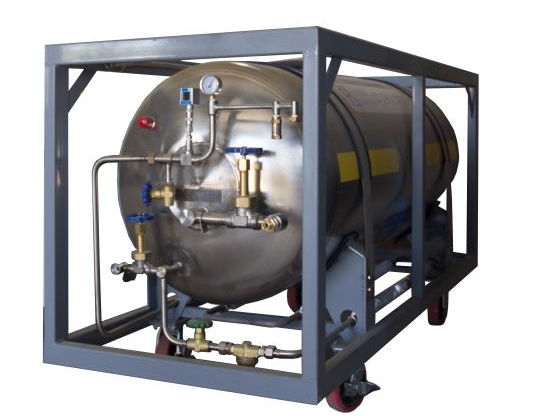
5.2 On-site construction method
(1) Equipment transportation:
① The cracker is 2m long, with an outer diameter of 110mm. When the cracker is filled with gas, when the pressure in the tube reaches 8MPa, the filling has been completed. At this time, the mass of liquid carbon dioxide in the cracker is about 6.8kg. The cracking capacity of the breeze rock is 14-30m3.
② After the cracker is filled with liquid carbon dioxide on the ground, it is hoisted vertically to the site of the pseudo-cracking rock with a crane or tower crane.
(2) Drilling: Choose the type of drilling rig: For hard rock, choose a down-the-hole drilling rig to drill. The slope of the empty surface should be above 1:0.35. Generally, two rows of holes are arranged on the rock surface, and they are arranged in a plum blossom pattern. The hole diameter is 13cm. , The borehole spacing is 0.8-1.2m in vertical and horizontal directions, and the drilling depth is 3 to 4m, and it is drilled into the rock formation at 90°.
(3) Cracker installation: After the drilling is completed, use a trachea to blow out the mud and small rocks in the hole, clean up the debris in the hole, and then backfill with appropriate gravel. Connect the gas-filled cracker and the 2m-long connecting pipe to form a pipe, and put the cracker into the hole to ensure that the connecting pipe leaks out of the rock surface. After the cracker is installed, fill the gap between the cracker and the hole with 3~5mm guamite, and vibrate with a vibrating rod to compact it.
(4) Resistance detection of the rupture device and wire fixing protection:
① Put the rupture device into the hole and fill it with guamite, after vibrating and compacting, lead out a wire from the rupture device;
② Check whether the wire is used before There are defects such as broken skin, cracks or broken wires; ③Use a multimeter to measure the resistance of the lead wire from the cracker, the resistance should be about 4Ω, if the resistance is too large or the resistance is 0, it will not be qualified;
④Use a double wire rope to connect each cracker The heads of the connecting pipes are all connected in series, the end of the steel wire rope is fixed in a firm position, and each hole is covered with asphalt canvas to prevent the gravel from flying out;
⑤Connect all the breakers in series with wires according to the power of the exciter, and finally connect To the exciter.
(5) Excitation: Connect all the fracturing devices in series with wires, connect them to the exciter, move the exciter to a safe position, and activate the cracking rock after all personnel have evacuated from the dangerous area.
(6) Recycling:
① Transport the recovered rupture device to the operation room, place the rupture device on the jaws of the disassembly machine, and insert one end of the filling valve into the disassembly and assembly head. Then turn the emergency stop button clockwise and press the start button to start the disassembly machine;
②Press and hold the release button, and then turn the cracker around;
③Clean up the residue inside the cracker for next use.
6 Conclusion
The carbon dioxide cracked rock excavation construction technology is to drill and crack the rock on the rock mass with the open face to make the rock mass rupture and slide to form the boundary surface of the free space, and continue along the vertical and horizontal directions of the open face after the cracked rock. Large-area boreholes are used for carbon dioxide gas cracking construction, which can efficiently and quickly complete the excavation of deep foundation pits. Play an exemplary role in cracked rock construction of similar open-cut foundation pits to better meet the needs of the development of urban foundation pit stone excavation construction technology in the future, promote the efficient and safe construction of subway construction technology, and meet the energy-saving and consumption-reducing green construction Claim.
